Moving from Ego-Centric to Eco-Centric
"The first half of life is devoted to forming a healthy ego. The second half is going inward and letting go of it." -Carl Jung
Organizations are no different. The early years focus on identity, differentiation, and getting noticed. These are very important to getting established. However, for organizations to experience long-term success, they need to grow up and move from an ego-centric identity to an eco-centric identity.
So what is the difference?
"Ego" is defined as "self-important"
"Eco" is defined as "combining form."
The personal ego that Carl Jung was famous for discovering is not all bad. In fact without ego, we wouldn't get anything done. The ego helps us execute and "reality test" like the definition describes. However, if the ego is given too much authority to grow, it will dominate in a self-serving way and leave a path of destruction in its wake, much like our modern businesses have done without regard to it's effect on human development or the Earth.
MOVING FROM EGO-CENTRIC
Ego-centric companies embody a mindset that operates primarily from the left-side of the brain. This is the half that analyzes, controls, and sees a linear future. It thrives off of rational, reductionistic thinking. It's a binary, either or world. Either your in or your out. Either it works or it doesn't. It is very mechanistic and grew in popularity in the recent industrial age.
Ego-centric organizations experience trouble in primarily in two ways:
1. Increased Rigidity - when the ego goes unchecked, organizations grasp tightly to past patterns of success in light of evolving industry changes. They begin a slow and insidious process of rigidity much like a corpse. When the blood stops flowing, the body dies, and then stiffens.
2. Myopic Vision - control is good to an extent, but when organizations let the control dominate the culture and decision-making, they lose relevancy, stifle relationships, and lack a broader vision that is beneficial beyond the company's interests.
Example - Blockbuster Video experienced unprecedented growth with it's video store model. It was a household name and a destination for many families. I remember the Blockbuster stores being packed on Friday night. But, as all life shows us, the world evolves, and in order to thrive, you must adapt. When the DVD world began migrating to digital streaming, Blockbuster hung on too tightly to it's successful store model and failed to innovate with the changes. Meanwhile Netflix started gaining market share with it's DVD-shipping model and created a customer base that was ready to move to digital streaming when broadband became speedy enough. Netflix is now worth approximately $10 billion. Blockbuster went bankrupt. Blockbuster was operating in an ego-centric, too-big-to-fail mindset. It was this rigidity and myopic "brick-and-morter" vision that ultimately lead to its demise.
MOVING TO ECO-CENTRIC
Eco-centric companies operate from a mindset that includes both sides of the brain as well as a broader ability to sense and respond to ever-changing externalities.
Eco-centric companies lean more heavily on the use of right brain thinking, which tends to be more creative, inclusive, and collaborative. However, they don't eliminate the left brain logic altogether, but rather use both simultaneously and embrace the natural paradox and tension that occurs by acknowledging both.
Furthermore, eco-centric organizations recognize that thriving in uncertainty requires a move from mechanistic thinking to living systems thinking. The machine-like logic of the industrial age has permeated our culture in both our way of operating and our way of thinking. The ego thrives off of this linear logic because it provides very clear processes and ways to measure and grow. However, it has lead to massive destruction of the natural world with its hyper-competitive consumptive logic and created depressing work cultures that suppress human development and growth.
FROM BREAKDOWN TO BREAKTHROUGH
Moving from ego-centric to eco-centric is shifting to a mindset that is a more inclusive, less partial way of moving through the world. All living things teach us how to operate harmoniously in diversity. How to grow and adapt. How to collaborate and co-create. How to move through seasons with grace.
If we see ourselves and our organizations as "combining-form" we can begin to recognize opportunity in times of disturbance. We can let go of the iron grasp of control and focus on the here and now.
The companies that I work with that are moving in a direction of eco-centricity are experiencing a rare form of empowerment in their workplaces that is also spilling over into their home lives. They are dissolving the unconcious wall between their workplace personas and their home-life personas. There is a rare integration that is occurring that is not only visible, but felt.
Like Carl Jung stated, these companies are "going inward and letting go."
This shift in logic requires bravery to let go and breakdown old patterns and create new eco-centric ones. The good news is that much like the natural world and our current fall season teaches us, following the breakdown there is always a breakthrough.
